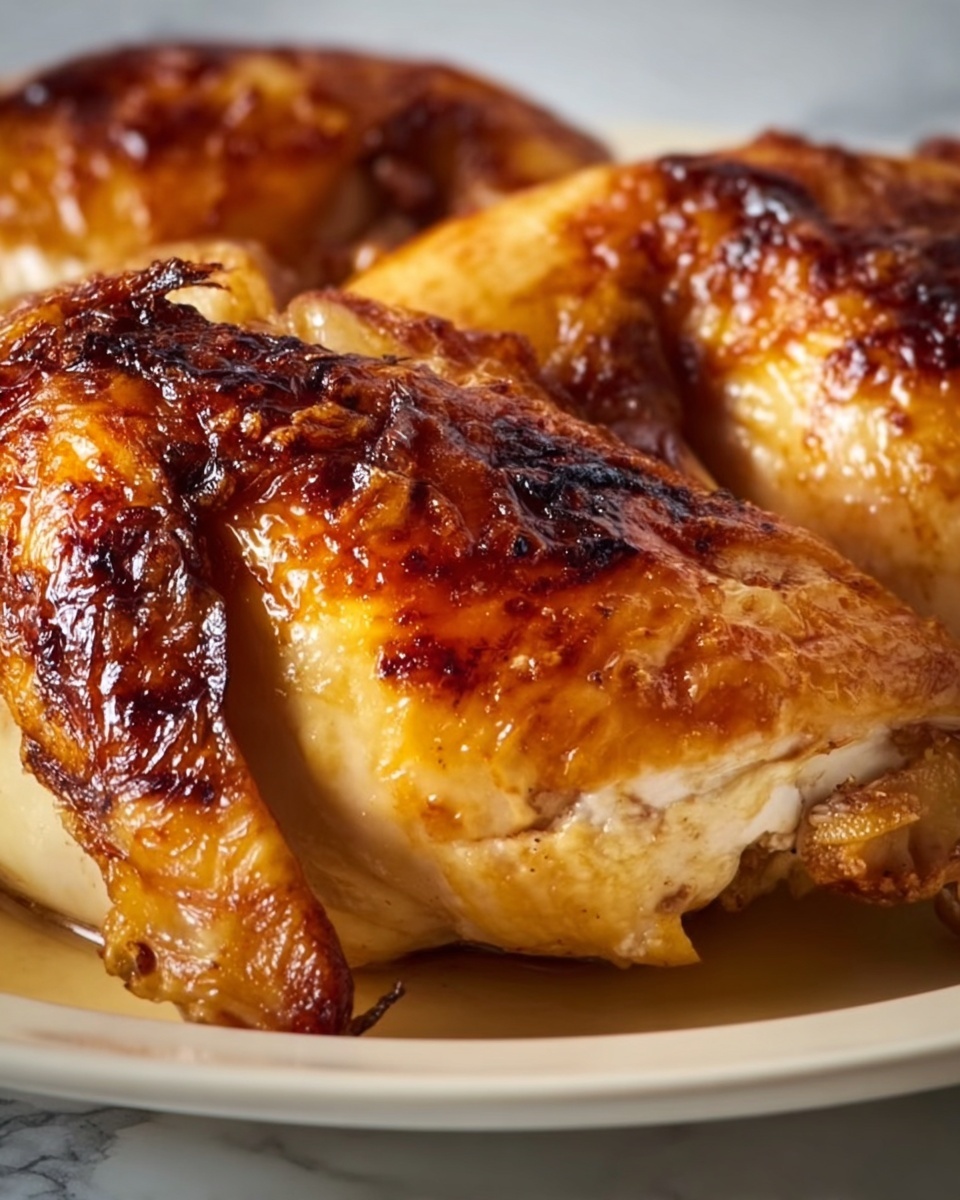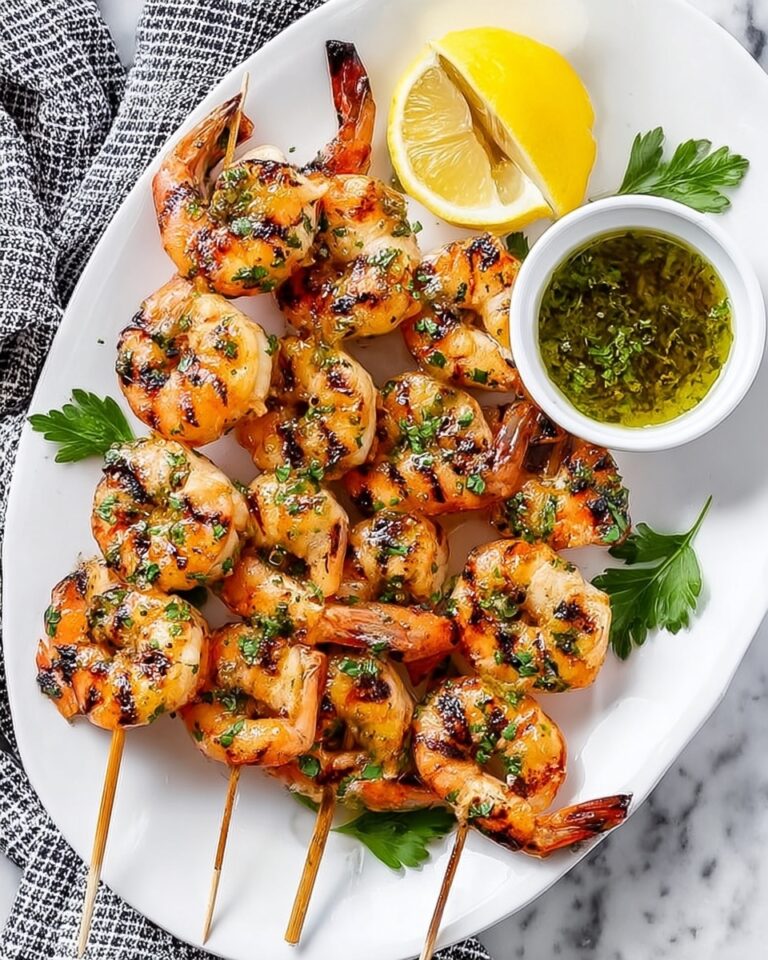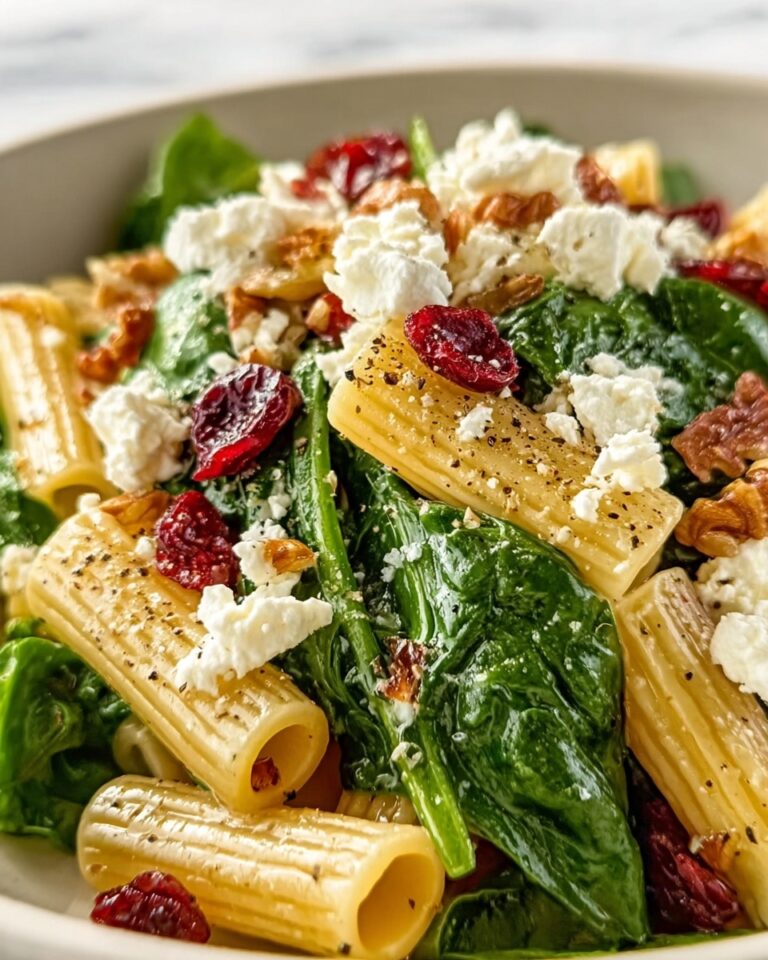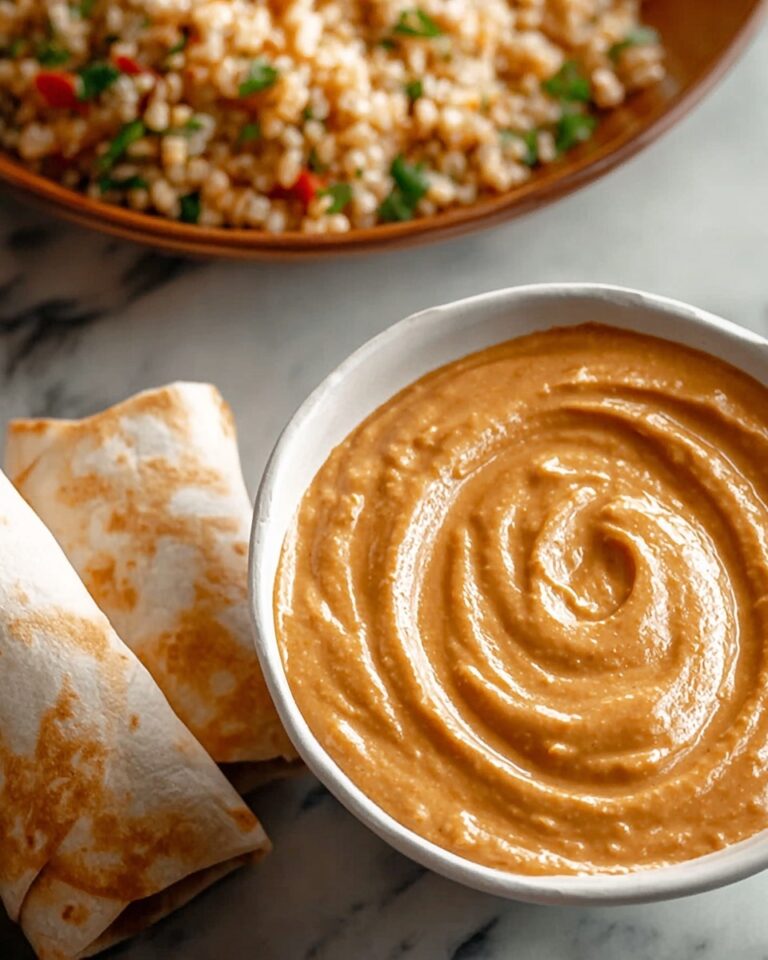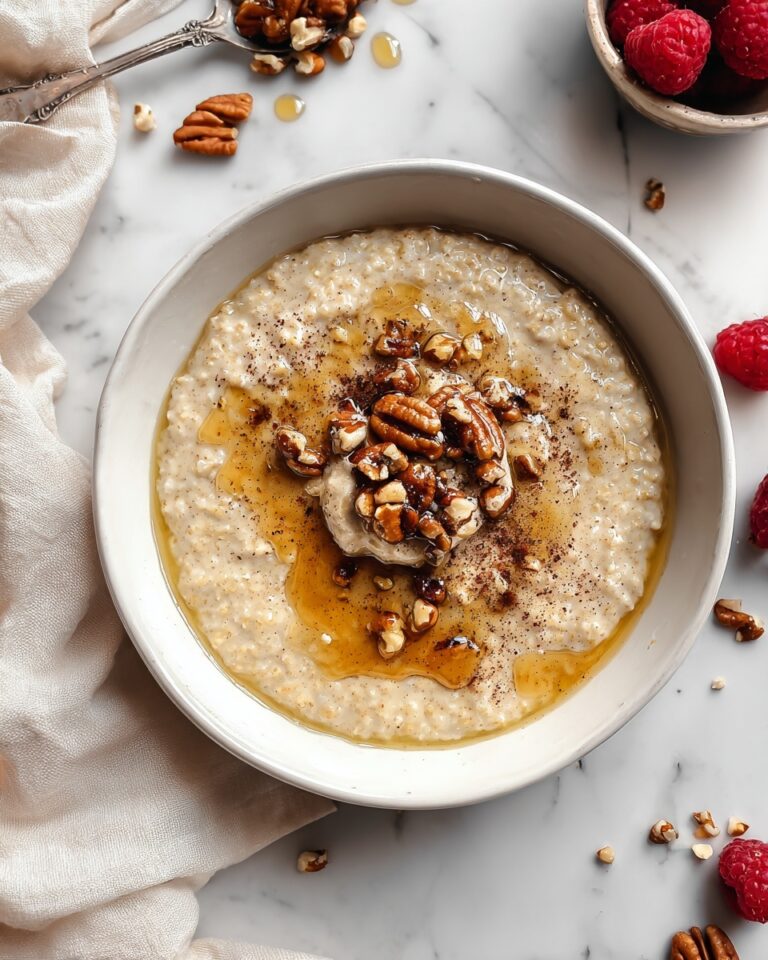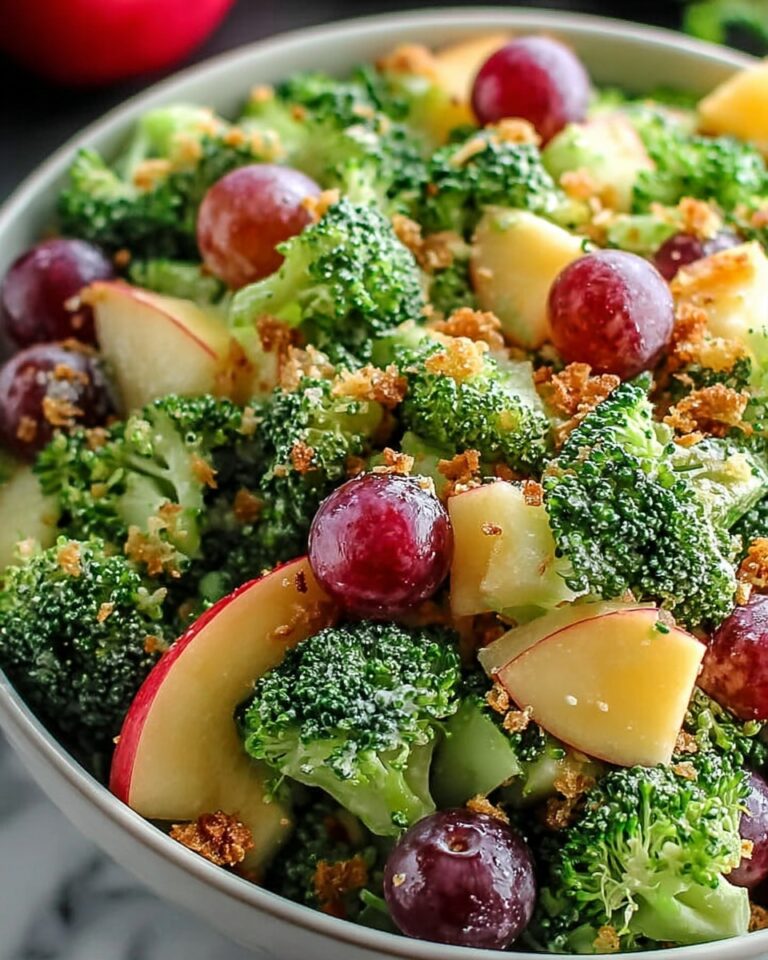If you love dishes that combine elegant presentation with irresistible flavors, this Honey Glazed Cornish Hens Recipe is a total game-changer. Juicy, tender Cornish hens get a beautiful golden shine from a sweet and tangy honey glaze that balances perfectly with fresh herbs and a hint of smokiness. It’s the kind of recipe that fills your kitchen with a mouthwatering aroma and impresses everyone at the table, whether you’re cooking for a special occasion or a cozy dinner. The best part? It’s surprisingly simple to prepare, delivering big flavors with a straightforward method that anyone can follow.
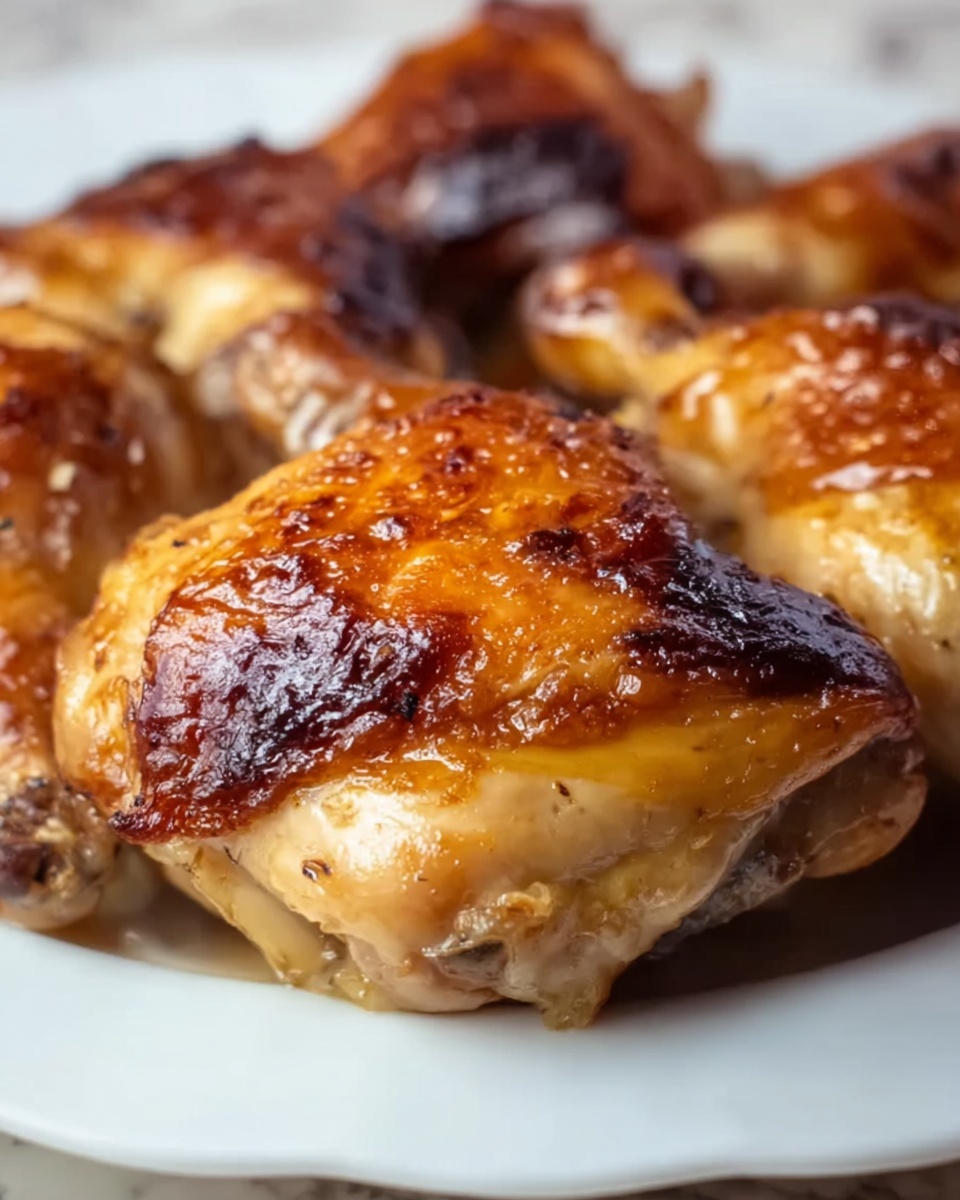
Ingredients You’ll Need
To make this Honey Glazed Cornish Hens Recipe truly shine, you’ll want to gather some simple but essential ingredients. Each one plays a vital role in enhancing the taste, texture, and color of the final dish—from the fresh herbs that add aromatic depth to the honey glaze that creates that irresistible caramelized crust.
- Cornish hens (2, about 1 1/2 pounds each): The perfect size for individual servings with tender meat and crisp skin.
- Olive oil (2 tablespoons): Helps achieve a crispy skin while adding subtle richness.
- Salt and pepper: Season simply to let the natural flavors of the hen shine through.
- Garlic (4 cloves, minced): Provides a fragrant and savory base.
- Fresh rosemary (1 tablespoon, chopped): Adds earthy, piney notes; dried can be a substitute.
- Fresh thyme (1 tablespoon, chopped): Brings a delicate herbal touch.
- Lemon (1, quartered): Inserts bright acidity inside the hen to keep meat juicy.
- Chicken broth or white wine (1/2 cup): Keeps the hens moist during roasting and adds depth of flavor.
- Honey (1/4 cup): The star of the glaze, creating a luscious, golden coating.
- Dijon mustard (2 tablespoons): Gives the glaze a slight tang and complexity.
- Soy sauce or tamari (1 tablespoon): Adds umami and an extra layer of flavor.
- Apple cider vinegar or lemon juice (1 tablespoon): Balances the sweetness with acidity.
- Smoked paprika (1/2 teaspoon, optional): Introduces a subtle smoky warmth that’s totally delightful.
How to Make Honey Glazed Cornish Hens Recipe
Step 1: Preheat the Oven
Start by setting your oven to 400°F (200°C). This temperature is perfect for roasting the Cornish hens so the skin crisps up beautifully while the meat stays moist and tender inside.
Step 2: Prepare the Cornish Hens
Pat the hens dry with paper towels—this simple step is key for crisp skin. Then, generously rub each hen all over with olive oil to lock in moisture and help the seasonings stick. Sprinkle salt, pepper, minced garlic, rosemary, and thyme evenly across the skin. Don’t forget to tuck a quarter of lemon inside each cavity; this infusion of citrus will add an irresistible bright flavor as the hens roast.
Step 3: Roast the Hens
Place the hens on a rack inside a roasting pan or simply on a lined baking sheet. Pour the chicken broth or white wine into the bottom of the pan; this steams gently as the hens cook, ensuring they stay juicy. Roast them for about 45 to 50 minutes, or until the internal temperature hits 165°F (74°C). Trust a meat thermometer if you have one for the perfect doneness.
Step 4: Make the Honey Glaze
While the hens are roasting away, mix up the glaze. Whisk together honey, Dijon mustard, soy sauce, apple cider vinegar, and smoked paprika in a small bowl. This blend brings a fantastic balance of sweetness, tang, and a touch of smoky flavor that elevates the hens.
Step 5: Glaze the Hens
About 25 minutes into roasting, pull the hens out and generously brush them with the honey glaze. Pop them back into the oven and continue roasting, brushing the glaze on every 10 minutes to build those gorgeous layers of caramelized, sticky coating. By the time they’re done, the skin should be a deep golden brown that’s irresistibly glossy.
Step 6: Rest the Hens
Once roasted to perfection, allow the hens to rest for 10 minutes before carving or serving. This resting phase lets the juices redistribute through the meat, keeping each bite juicy and flavorful rather than dry.
How to Serve Honey Glazed Cornish Hens Recipe
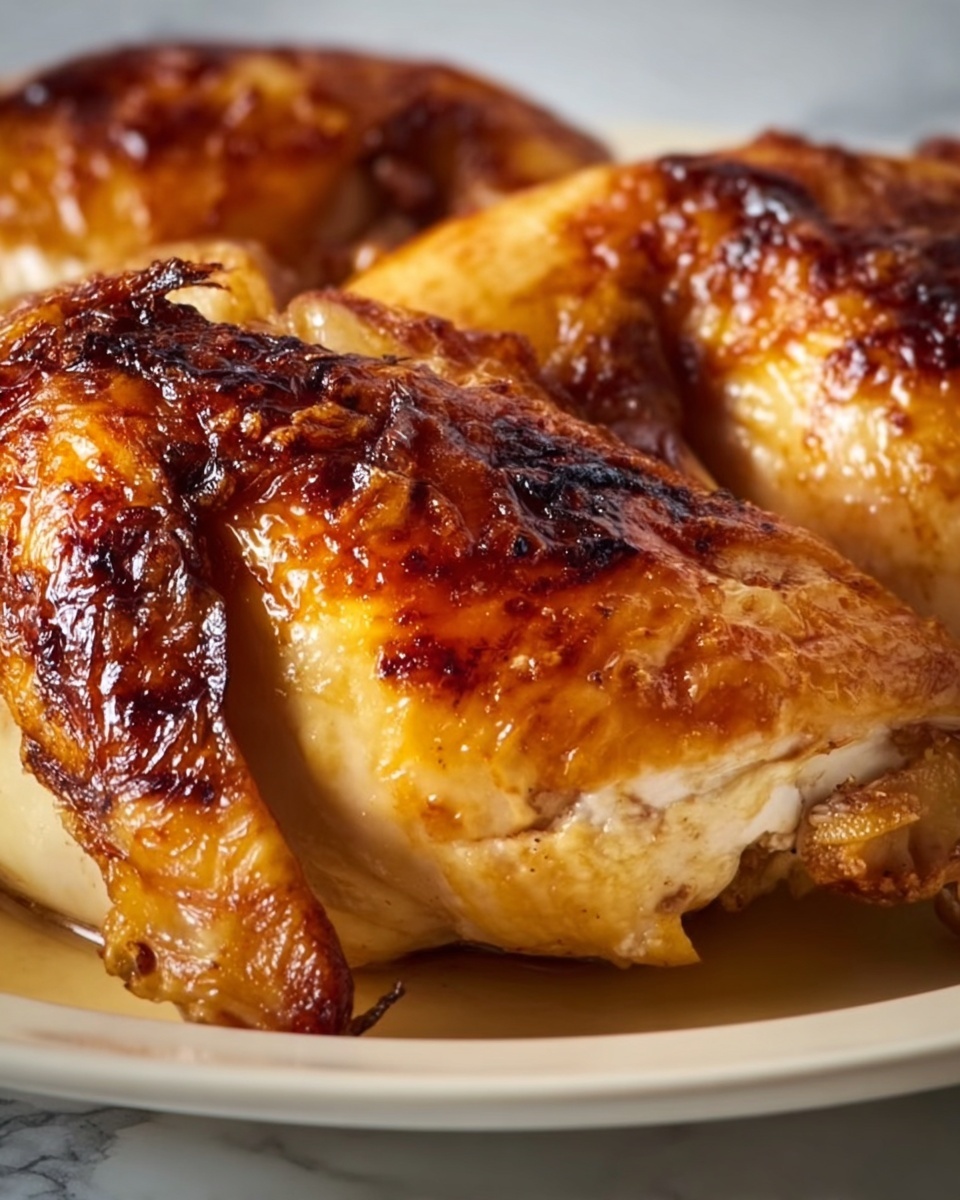
Garnishes
Finishing with fresh herbs like rosemary sprigs or thyme leaves sprinkled around the plate adds a lovely visual and aromatic touch. A few lemon wedges on the side invite guests to add a spritz of brightness according to their taste.
Side Dishes
Because these hens pack so much flavor, they’re beautifully complemented by classic sides. Think creamy mashed potatoes, roasted root vegetables, or a crisp green salad with a light vinaigrette that cuts through the richness. Even a simple pilaf or buttery dinner rolls will elevate your meal effortlessly.
Creative Ways to Present
For a wow factor, serve the hens halved and arranged neatly on a large platter surrounded by colorful vegetables or wild rice. You can also place each whole hen on individual plates for an elegant, restaurant-style presentation that’s sure to impress.
Make Ahead and Storage
Storing Leftovers
Leftover Honey Glazed Cornish Hens can be stored in an airtight container in the refrigerator for up to 3 days. Make sure the meat is completely cool before sealing to preserve freshness and prevent sogginess.
Freezing
If you want to keep the hens longer, wrap them tightly in plastic wrap and then foil, or place pieces in freezer-safe bags. Frozen portions keep well for up to 2 months. Just remember to thaw fully in the fridge before reheating.
Reheating
To reheat, place the hens in a preheated oven at 325°F (160°C) covered loosely with foil to prevent drying out. Heat for 15-20 minutes or until warmed through. Brushing a little extra glaze on before reheating will bring back that delightful shine and flavor punch.
FAQs
Can I use chicken instead of Cornish hens?
Absolutely! While Cornish hens are smaller and cook faster with a delicate texture, you can substitute small whole chickens or chicken parts. Just adjust cooking times accordingly.
Is it okay to use dried herbs instead of fresh?
Yes, dried herbs can be used when fresh aren’t available. Use about one-third the amount of dried herbs since they’re more concentrated in flavor.
Can I make the honey glaze ahead of time?
Definitely! The honey glaze can be mixed up a day or two ahead and stored in the fridge. Just give it a quick whisk to recombine before brushing it on the hens.
What if I don’t have chicken broth or white wine?
You can substitute water with a pinch of salt or vegetable broth to keep the hens moist. The flavors won’t be quite as rich, but they’ll still be delicious.
How do I know when the hens are done?
The safest and most reliable way is to check the internal temperature with a meat thermometer. It should read 165°F (74°C) at the thickest part of the thigh without touching bone.
Final Thoughts
Making this Honey Glazed Cornish Hens Recipe is like treating yourself to a little culinary magic at home. The balance of sweet honey glaze, fragrant herbs, and juicy tender meat is truly unbeatable. It’s a dish that feels special but is approachable enough for any skill level. So go ahead, gather the ingredients, and dive into this delightful recipe—you’ll be so glad you did!
Print
Honey Glazed Cornish Hens Recipe
- Prep Time: 15 minutes
- Cook Time: 50 minutes
- Total Time: 1 hour 5 minutes
- Yield: 4 servings
- Category: Main Course
- Method: Baking
- Cuisine: American
Description
This Honey Glazed Cornish Hens recipe delivers tender, flavorful poultry with a beautifully caramelized honey glaze. The hens are seasoned with garlic and fresh herbs, roasted to perfection with a moistening broth or wine base, and glazed halfway through cooking to achieve a golden, sweet, and savory crust. Perfect for an elegant dinner or special occasion, this dish pairs wonderfully with roasted vegetables, mashed potatoes, or a fresh salad.
Ingredients
Cornish Hens
- 2 Cornish hens (about 1 1/2 pounds each)
- 2 tablespoons olive oil
- Salt and pepper to taste
- 4 cloves garlic, minced
- 1 tablespoon fresh rosemary, chopped (or 1 teaspoon dried rosemary)
- 1 tablespoon fresh thyme, chopped (or 1 teaspoon dried thyme)
- 1 lemon, quartered
Roasting Liquid
- 1/2 cup chicken broth or white wine
Honey Glaze
- 1/4 cup honey
- 2 tablespoons Dijon mustard
- 1 tablespoon soy sauce or tamari
- 1 tablespoon apple cider vinegar or lemon juice
- 1/2 teaspoon smoked paprika (optional)
Instructions
- Preheat the Oven: Preheat your oven to 400°F (200°C) to ensure a hot roasting environment for crispy skin and tender meat.
- Prepare the Cornish Hens: Pat the hens dry with paper towels to remove moisture for better browning. Rub each hen all over with olive oil, then generously season with salt, pepper, minced garlic, rosemary, and thyme. Insert a quarter of lemon into the cavity of each hen for added aroma and moisture.
- Roast the Hens: Place the hens on a rack set in a roasting pan or on a baking sheet. Pour the chicken broth or white wine into the pan; this keeps the hens moist during roasting. Roast in the oven for about 45-50 minutes, or until an internal temperature of 165°F (74°C) is reached.
- Make the Honey Glaze: While the hens roast, whisk together honey, Dijon mustard, soy sauce, apple cider vinegar, and smoked paprika in a small bowl until smooth and well combined.
- Glaze the Hens: After 25 minutes of roasting, remove the hens from the oven and brush them generously with the honey glaze. Return them to the oven and continue roasting for another 20-25 minutes, basting every 10 minutes with additional glaze. This creates a golden and caramelized skin.
- Rest the Hens: Remove the hens from the oven and let them rest for 10 minutes. Resting allows the juices to redistribute, ensuring moist and juicy meat.
- Serve: Serve the honey glazed Cornish hens whole or halved. Pair with your favorite sides like roasted vegetables, mashed potatoes, or a fresh salad for a complete meal.
Notes
- Use a meat thermometer to check doneness for safe and perfect cooking.
- If you prefer, substitute chicken broth with white wine or vice versa to vary flavor.
- Smoked paprika in the glaze adds a subtle smoky depth, but can be omitted for a milder taste.
- Basting regularly helps achieve a sticky, flavorful glaze and crispy skin.
- Letting the hens rest is crucial to keep the meat juicy.

